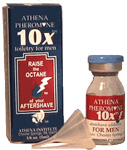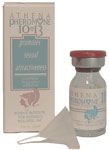
Chapter 8:
Protect Your Bones - with Exercise, Posture, Vitamin D, Calcium, and Hormones
"Look Inside" Dr. Winnifred Cutler's essential book; an excerpt from Chapter 8 for readers.
Click here for full book description
Download Chapter for Free-(pdf)
Copyright © 2009 John Wiley & Sons, Inc.
Hormones and Your Health: The Smart Woman's Guide to Hormonal and Alternative Therapies for Menopause
Excerpted pages 133-135, 140-142, 146
Your bones form your skeleton—the scaffolding of your body and the protective shield for your internal organs. Their strong outer structure, composed of calcium and other minerals, is interlaced with tiny blood vessels and nerves. Their inner, more liquid portion (marrow) is rich in blood vessels and is the manufacturing site of your red blood cells. When you reached your full height, the lengthening of your bones stopped, but for the rest of your life they dynamically change in thickness.
Imagine an architectural-design firm that is commissioned to keep a posh apartment complex attractive and functional. Similarly, a lifelong renovation process continuously remodels your bones. Your “remodeling units” work throughout your skeleton.91, 265, 350, 514 Thousands of tiny manufacturing “job-sites” are set up, removing and reforming the skeleton as materials (supplied in your diet) are recycled and new bone tissue is deposited.
This massive reconstruction project is directed by your hormones using the materials you have supplied in your diet. Around age 35 to 40, as your progesterone levels begin to decline, the bone removal activities tend to outstrip bone formation, and adult bones begin to decrease in density. If your body cannot maintain enough new bone formation, your bones will continue to lose density and become increasingly fragile as you age. That architectural firm is slacking off. Eventually, this fragility results in osteoporosis.
Let me explain the magic of bone structure and function. I will show you how to keep your bones strong, your whole life long.
Bank on Your Bones
Like a bank where you deposit money to cover future expenditures, healthy bones act as a bank for calcium. Your lifetime dietary practices exert major influences on how solvent your bank account stays. The more calcium and vitamin D that you can deposit before age 35, the greater your peak bone mass. Osteoporosis rarely develops before menopause; that much was known as early as 1941.14 It took 40 more years to discover the reason: the decline of reproductive (sex) hormones around menopause. If you haven’t had a hysterectomy, your perimenopausal transition beginning around age 40 sets in motion a change in hormonal patterns that initiates the “withdrawal” of these calcium savings, typically about 1 to 2 percent per year. The richer your bone bank and your sex hormones, the better off you will be.
***
Hysterectomy and Bone
It’s hardly surprising that having a hysterectomy is bad for your bones. A hysterectomy disrupts the sex hormone symphony. Surgical menopause (removal of the uterus and the ovaries) triggers a dramatic loss of bone. Unchecked, a hysterectomized woman can lose more than 60 percent of the bone she had as a young woman. In 1988, my colleagues and I published evidence showing that a hysterectomy (even when the ovaries were retained) accelerated the loss of bone in comparison to bone loss in intact women of a similar age.176 Until a post-hysterectomy woman takes aggressive action with a combination of nutritional, hormonal, and exercise regimens, she is at extreme risk of developing osteoporosis.
Get Enough Sunlight to Boost Your Bones
Sunlight is the trigger that sets in motion a great many physiological processes that maintain and enhance life. Just as green plants need sunlight to thrive, so do women. Sunlight’s ultraviolet radiation warms and penetrates your skin, and its creamy molecules of cholesterol are converted into a “pre” vitamin D. These particles of previtamin D travel in the bloodstream to the kidneys, where further conversion renders them into a usable form of vitamin D. By 2007, cellular receptors for vitamin D had been found just about everywhere that scientists had looked: in the skin, the gonads, the brain, the vagina, the pancreas, the stomach, and the heart muscles. Vitamin D helps prevent or reduce the risk of osteoporosis. It also fights breast and prostate cancer, hypertension, and cardiovascular disease.
Bones in the Buff
In Benjamin Franklin’s 1729 autobiography, he reveals that he understood the importance of sunlight when he describes his daily habit of sitting naked in a window to allow sun on his skin every day for at least 15 minutes.247 (Apparently, he found a private location to do so!) It is stunning to consider that in the middle of the eighteenth century, Franklin’s genius extended from discovering the geophysical forces of electricity to developing public libraries, to founding the University of Pennsylvania, making major contributions to the fledgling U.S. democracy, and recognizing the need for sunlight on his own skin. Fifteen minutes a day, when the sun can penetrate your skin through ultraviolet B radiation, is probably just about right. You may be able to “try this at home” with judicious care.
Vitamin D Absorption: Skin Shades Matter
The paler your skin, the greater its capacity to respond to the sun and convert its cholesterol precursor product into the vitamin D that is essential for so many of our bodily functions, such as calcium absorption and cancer prevention. The darker your skin, the higher its content of melanin, a substance that absorbs the UVB and thereby blocks the beneficial action of UVB that generates previtamin D. So the darker your skin, the more exposure to sunlight it needs to do its job: forming previtamin D. Even the elderly, with their reduced levels of previtamin D3 still have a large capacity to make adequate vitamin D if they get enough sunlight!
The Dark Side of Sunblocks
A sunscreen with a sun protection factor of 15 that is applied to sun-exposed skin absorbs more than 99 percent of the ultraviolet B radiation. Unfortunately, using a sunscreen blocks the very site where sunlight is converted into the vitamin D. If you have tanned skin, this also blocks the sun’s capacity to deliver vitamins. So I’m not advising you to get a tan, just get some sunlight on your bare skin. Like Ben Franklin.
Vitamin D: What's a Smart Woman to Do?
It seems prudent that every woman should take a vitamin D3 supplement of 1,000 IU per day if she doesn't do a "Ben Franklin" daily. Ideally, the supplement should be taken after, not before, a meal to enhance the absorption.
END OF EXCERPT
Dr. Cutler's pheromone science has been "bottled" into vials of unscented fragrance additives that increase wearers' sexual attractiveness. AVAILABLE FOR PURCHASE HERE

